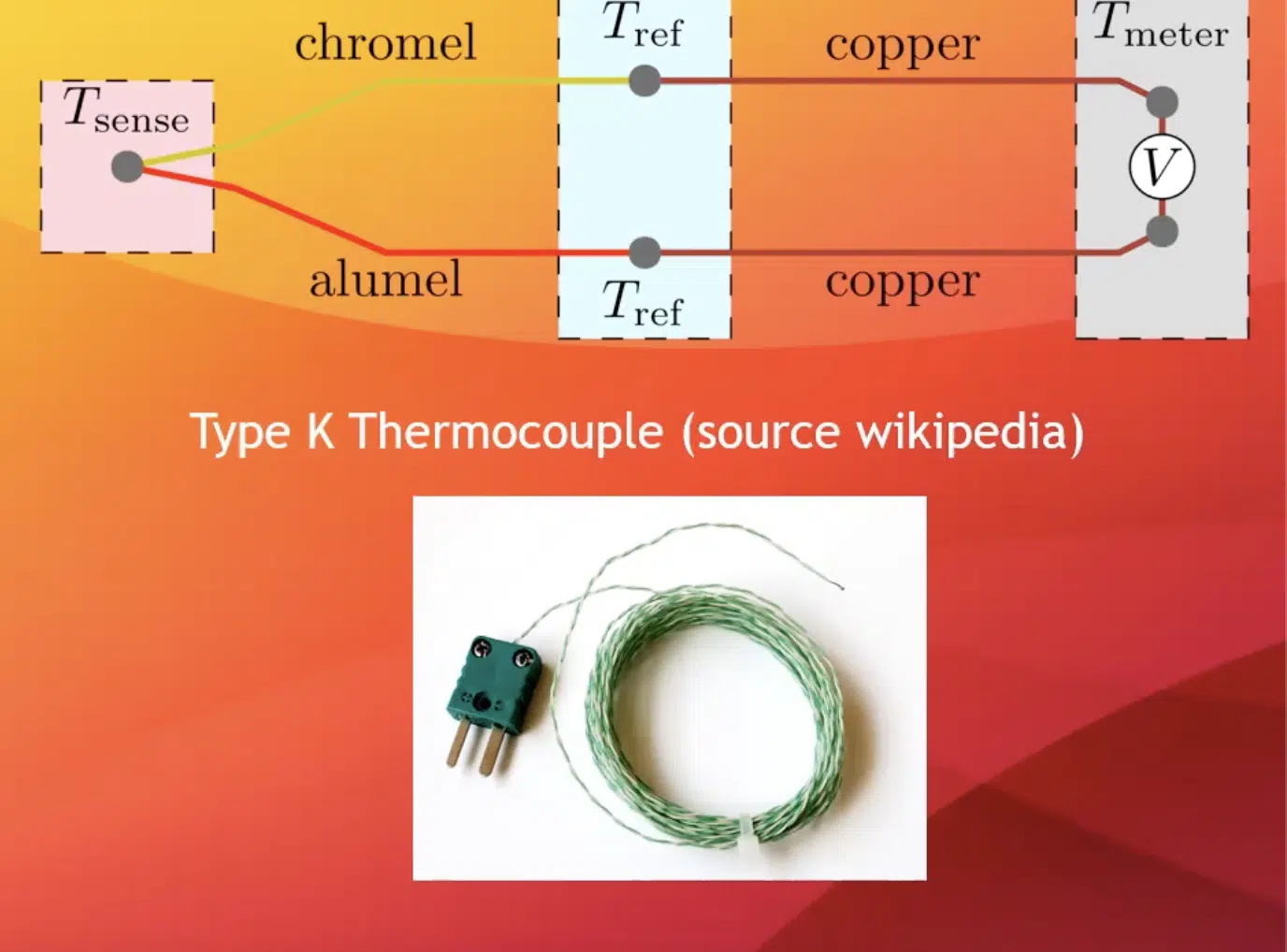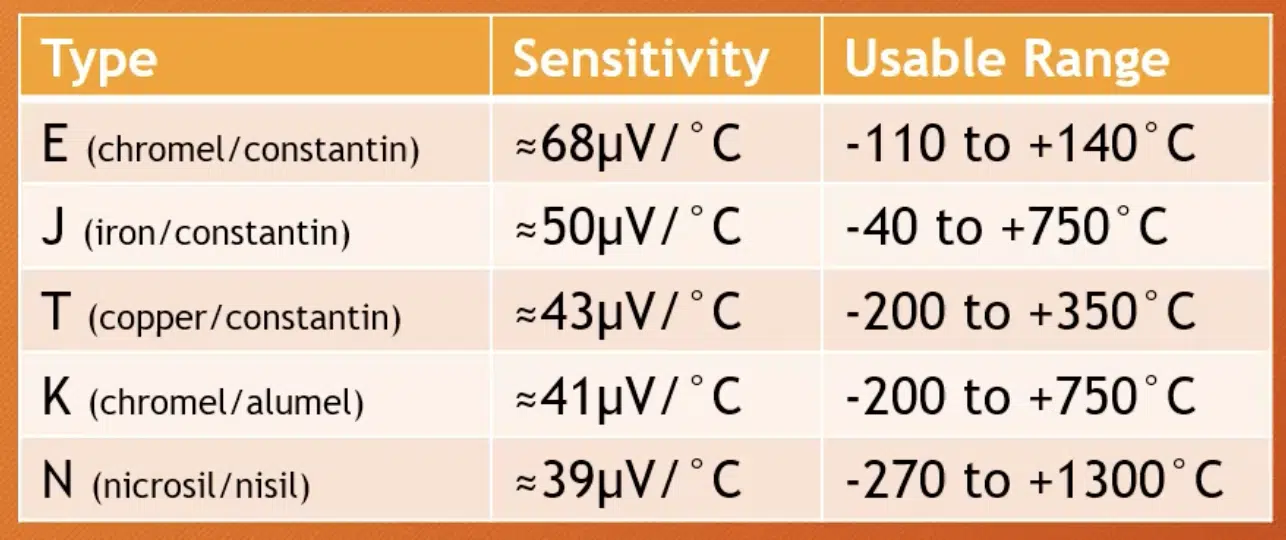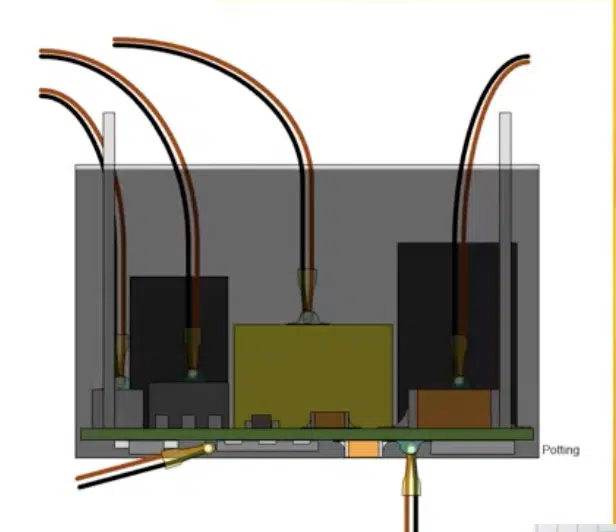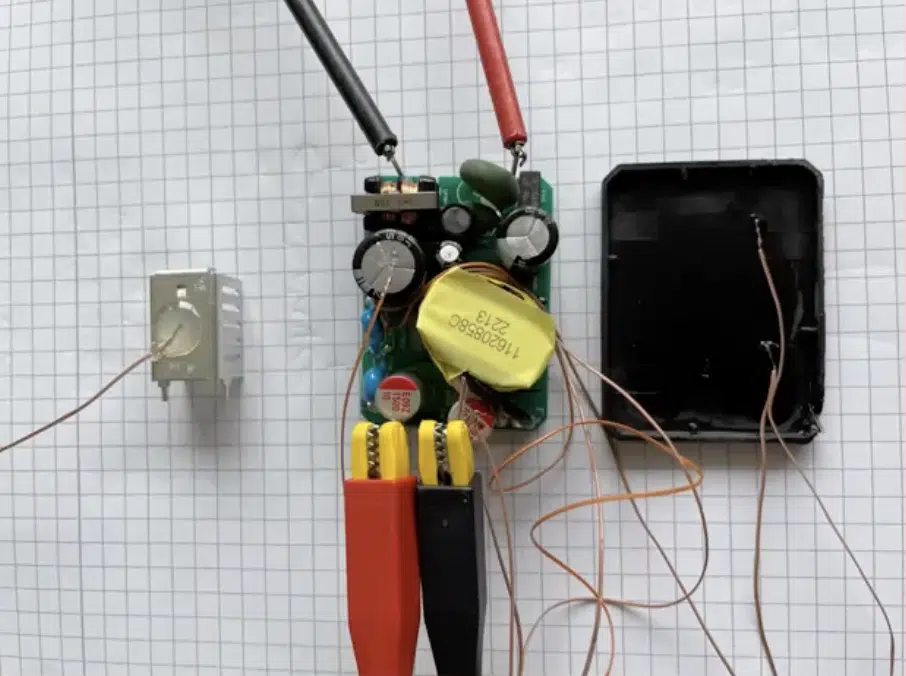Multichannel isolated thermocouples is a system that RECOM developed for use in a test lab. We will discuss how this will be useful for others to know the advantages and disadvantages of such a system.
What is a thermocouple? It is two different types of metals that are joined together. In figure 1, we have a metal that’s called chromel, and another one called alumel. When these two metals join at a single point, then this will produce an electrochemical effect, which is called the Seebeck Effect.
This will develop a small voltage when there is a temperature difference between the sensing point, which is commonly known as the hot junction, and a reference point, which is commonly known as the cold junction. The cold junction is the other end of the wires, and (figure 1) shows a typical thermocouple where the cold junction is the plug and the hot junction is the tip of the wires where they are joined together. The voltage that develops is dependent on the temperature difference and the metals used. What is important is that the plug that you see in (figure 1) is also made of the same metal as the thermocouple. The metals act as a proper cold junction on the other end where you are measuring the temperature difference between them. In this case, you can use normal copper wires, and you can measure the voltages developed.

The difference between Tref and Tsense are which generates the voltage. Where it says Tref in figure 1 is the same temperature for both cold junctions together. Otherwise, you will have problems. The reason for this is the amount of voltage that’s generated by these differences in metals. The different types of thermocouples that are most used in measuring electronics’ temperature is type T. Type E is the next most commonly used, and Types K and J are the least common. For each of the types, there is a temperature sensitivity.

With Type E being the most sensitive, which is chromel and constantin, means it generates 68 microvolts per celsius (figure 2). Even with one hundred degrees differences, we’re still talking about microvolts, and with other metals, it is even less. Type K only maybe two-thirds of the sensitivity is used, although you do have the advantage that it can be used over a much wider temperature range. That is why they have the different types depending on the sensitivity you need and the range that you need.
Traditionally, a thermocouple was tested in the lab with a true cold junction, which is an ice bucket. With updated technologies, we longer need to do that. The reason cold junctions are used so often in testing is the frequent use of potted or encapsulated products. It is important to know the temperature of the components inside the potting, so you can’t measure it with any other means. For example, you cannot use infrared and measure the use of a thermal camera to measure the temperature. You can only measure the outside temperature, and you can’t measure the internal temperature inside the potting. This is because the thermocouple measures at a point where the two metals join, and it can be used to measure the temperature very precisely. For small components, this is useful to check the temperature of individual transistors, individual diodes, and larger components, such as a transformer or capacitor.


Thermocouples are also disposable and reusable and can be removed if glued onto a surface for another use. These poses are a large advantage over using thermistors, for example. This other alternative is essentially a resistor which changes its resistance with temperature. It can be used to measure temperature at a point physically by contact. Compared to a thermocouple, this is the more expensive option because a thermocouple is just two wires joined together, and the thermistors are used at a point physically by contact. Second, the thermistors, physically, are quite large. It requires a resistor; therefore, it cannot be used to measure accurately the temperature of a smaller component. Another advantage of using a thermocouple is that they are small and do not act as a heat sinker themselves. They do not conduct much heat away from the contact point. The accuracy of the measurement is not affected when attaching a sensor to a small component and conducting the heater away through the wires. In figure 3 and figure 3a, we have an example of an AC DC converter, and there are several sensors to measure the temperatures of the heat sink or the components in the open air once it has been potted. With this function alone, thermocouples prove to be a general-purpose and useful tool.




